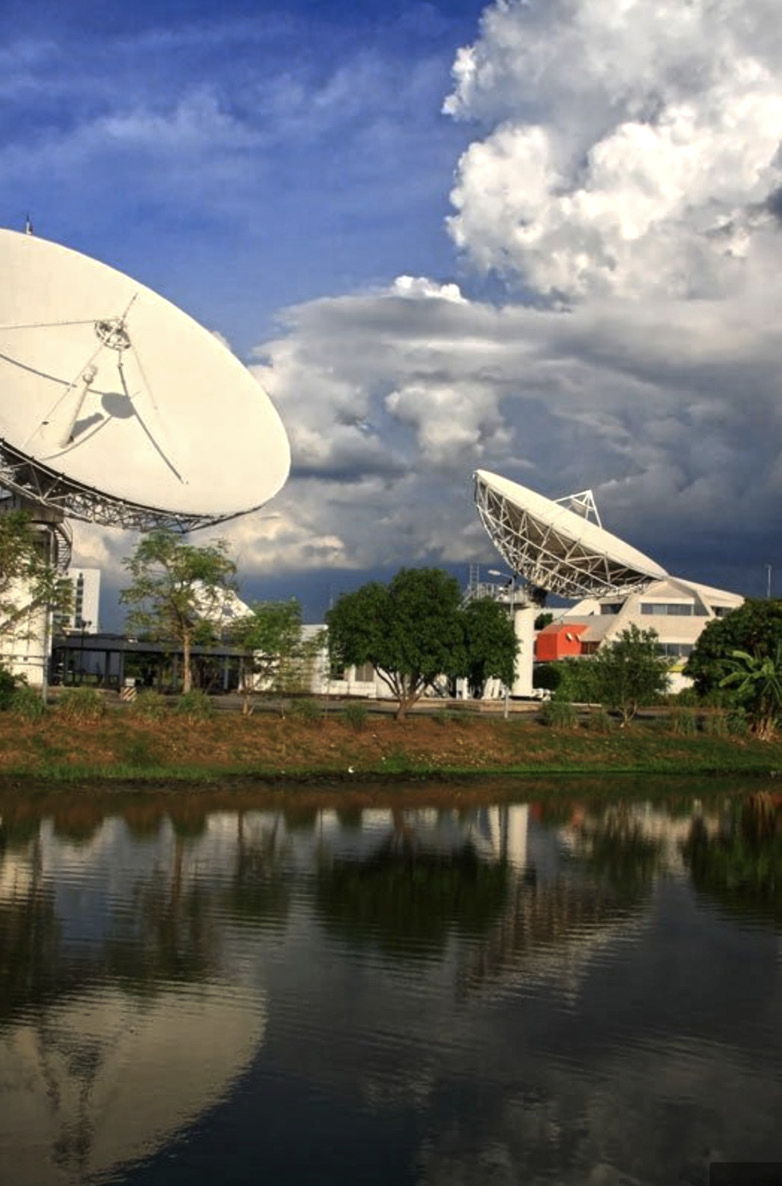2024 delivered on its promise; there has been plenty of change and innovation within satcom. New Space has charged ahead, as have the responses from traditional operators and manufacturers alike.

Mirroring the change on-orbit, ground segment networks are expanding rapidly, with innovative technologies at the forefront of its rollout. The scale of dynamic LEO and multi-orbit infrastructures, consisting of hundreds, if not thousands, of gateways, have delivered new technical challenges.
The need for
intelligent
ground stations
At Atheras Analytics, our year kicked off with the announcement that our sister company, Atheras Analytics SAS, had been awarded a 12-month contract by the European Space Agency (ESA) to develop a bespoke Ground Segment Dimensioning Tool for constellations consisting of one or more satellite networks in potentially different orbits with inner-satellite link (ISL) capabilities.
With satellite technology being used extensively to connect governmental organizations, LEO and MEO orbits are being more widely deployed. Further deployments are set to increase at a rapid rate in the coming months and years to provide low latency, high performance capabilities.
Our SGD Design Tool is helping to facilitate validation of ground segment designs for both governmental and commercial use, with capabilities such as ground segment trade-off analyses, performance evaluation, and different concepts of operation taking into account weather patterns that are of particular relevance for networks employing higher frequency bands such as Ka-band and Q/V-band.
The tool uses Artificial Intelligence (AI) to analyze candidate gateways, determine weather correlations between individual candidate sites, and to determine network availability for specific groups of gateway locations. This allows operators to select gateways with the best historic link availability, as well as groupings of gateways with the maximum weather independence between gateway locations to minimize the number of sites affected by the same weather system at the same time. An inefficiently designed large- scale ground network can result in significant unnecessary costs, hence the importance of our solution.
Plethora
of events
We had many successful trips to industry events throughout the year, having attended SATELLITE, CABSAT, IBC, and Asia Tech x Singapore to mention a few. I enjoyed being a panelist at SATELLITE where I discussed ‘Designing the Digital Ground Segment of the Future’ with the World Teleport Association.
With virtualization key to the future of satellite, there are numerous ways in which software can be used to improve how effectively we switch signals from one place to another. AI was front and center of the discussions throughout all events, with organisations looking to foster its strengths within their operations. It was agreed that AI is playing a pivotal role within the expansion of satcom.
Our innovation
recognized
This was reflected in recent months when our Multi-Orbit Design Tool was awarded Best Digital Innovation of the Year at the debut of the Strategies in Satellite Ground Segment (SSGS) conference. The tool has
been developed with funding from ESA to model and optimize the design of satellite ground networks for both GEO and non-GEO constellations, taking into account, in addition to weather impairments, multiple parameters to

determine overall system capacity and availability, including:
• individual satellite capacity,
• inter-satellite link capacity,
• feeder link capacity,
• multiple orbital planes,
• multiple satellites/planes,
• number (and location) of ground stations,
• number of antennas/ground stations,
• frequency of operation,
• multiple coding and modulation schemes.
Analysis for
SKYNET 6
In August, we announced that Atheras Analytics had been selected by the UK Ministry of Defence to provide Ka-Band propagation analyses for the proposed SKYNET 6 ground station sites.
SKYNET is the MoD’s satellite communications (SATCOM) capability and is a family of military communications satellites which provide strategic communication services to the UK Armed Forces and allies. With high bandwidth applications required by the MoD, high throughput networks are essential to its network.
When using higher frequency bands, which are more susceptible to attenuation, extensive network planning is crucial in maintaining reliable connectivity. Our software tools were selected due to their high efficacy in determining ground station locations to ensure maximum network availability.
What to expect
from 2025
It has been clear that SATCOM is in the midst of a major transition and we are witnessing fresh players in New Space, existing players shifting business models and consolidating, and entirely new industries looking toward SATCOM for necessary solutions.

As the industry continues its ground segment rollout, I believe smart technology will be integral to its success. AI will continue to play an important part in data processing and analysis, enabling efficient automation and improving gateway management.
Never before have we seen such high levels of interaction between gateways, nor have we seen such high numbers of teleports used in the ground segment. I predict we will continue to see growth in the multi- orbit hybrid networks market, and careful coordination and validation of sites will be critical in ensuring high-quality services.
Our solutions allow ground segment operators to plan, optimize, and manage sites to ensure reliability and efficiency throughout their networks, regardless of their size and complexity.
We are working on many exciting collaborations and projects next year and we look forward to sharing them with you in due course.
atherasanalytics.com


